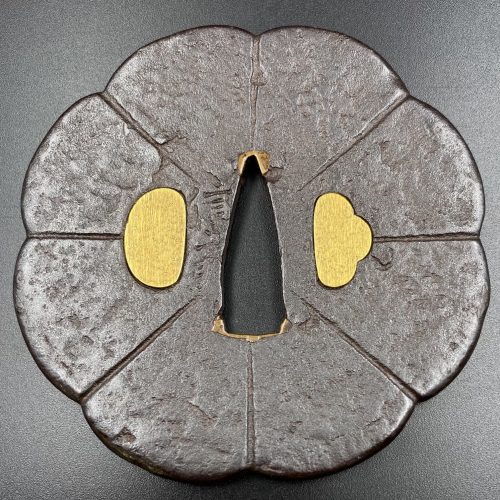Iron tsuba in a form of an eight-petalled blossom (lotus) form, petals separated by linear low-relief carving, both hitsu-ana filled with gold plugs, the surface decorated with tsuchime-ji, rich grey-brownish patina, niku from 4 mm in the centre to 6 mm at the rim. Strong (futoji-mei) Nobuie [信家] signature to the left of nakago-ana. Attributed to the 2nd generation of Nobuie masters (Nidai Nobuie).
Size: outer diameter 84 mm, thickness at centre: 4 mm, at rim: 6 mm. Wight: 167 g.Signed: Nobuie [信家]
Probably the work of Nidai Nobuie (c. 1600).
The gold plugs are likely a later work.



